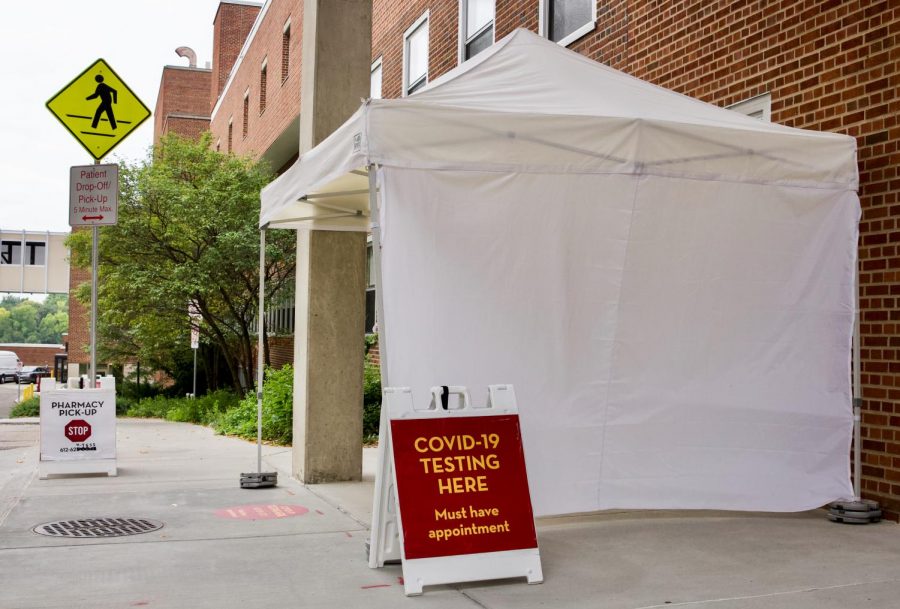As higher education leaders weigh the use of college-entry testing, University of Minnesota research has found some tests are not representative of future academic success.
Two University studies found women have higher GPAs than their ACT test scores alone would predict. The findings come amid months of discussion by the Board of Regents over the best way to approach standardized entrance exams.
Heidi Keiser, University doctoral candidate and co-author of the studies published in April’s Journal of Applied Psychology, said the studies evaluated the effects of conscientiousness and course difficulty on GPAs among men and women compared to their ACT scores.
“If we just use the ACT score alone to predict female performance in the course, their performance would be under-predicted,” Keiser said.
She said she drew subjects from an introductory psychology course between 2011 and 2012, where 59 percent were
female and 41 percent were male. She then compared their ACT scores and GPAs to personality inventory results, like conscientiousness or neuroticism.
“By using both the ACT and measure of conscientiousness, we were more accurately able to predict female performance in the course than if we were just using the ACT alone,” Keiser said.
Conscientious behaviors play the same role in men and women, but on average females are more conscientious and perform conscientious behaviors like completing homework and attending class at a higher rate than males, Keiser said.
”[Given] a male with a 30 on the ACT and a female with a score of 30 on the ACT, on average … that woman will do more of these conscientious behaviors that lead to higher performance in college,” Keiser said.
Nicole Sward, a junior at Bethel University, said she got an ACT composite score of 22. Sward said
she currently has a 3.90 GPA and has been on the dean’s list each year she’s attended Bethel, which she started as a full-time PSEO program high school student.
“I had above a 4.0 in high school but struggled to even get a 22 on the ACT. I had to have an ACT tutor, but even that didn’t help me much when it came to scoring high on the ACT exam,” Sward said.
Theatre arts, film studies and mass communication sophomore Jennifer Shaw and journalism sophomore Olivia Iverson both said they received ACT composite scores of 26, which was below the University’s average. Shaw has a 3.9 GPA, while Iverson has a 3.8 GPA.
“I don’t think it accurately depicted me because it didn’t get a sense of how I am as a student,” Shaw said. “I don’t think that this one little number means everything about how someone is going to do for these four years of their life.”
Keiser said her second study focused on course difficulty between men and women by creating a course difficulty index that expanded over hundreds of colleges with 150,000 male students and 180,000 female students.
She said things like subject matter, grading standards and competition all play parts in determining course difficulty.
Keiser said women choose easier classes on average, which helps their GPAs. But she said this relationship is less important than the one between female students and conscientious behaviors.
Importance of ACT debated
In recent months, regents have considered the importance of ACT scores in enrollment decisions. The ACT is currently used heavily to determine acceptance for freshmen, said Regent Michael Hsu.
One topic regents have discussed, Hsu said, is changing admissions decisions to test-optional, which would give prospective students the option to exclude ACT scores from their applications.
Hundreds of insititutions, like George Washington University and the University of Texas, have adopted this policy, he said.
“It disadvantages a certain percentage of the population; many of those are students of color and rural Minnesotans,” Hsu said. “I think … requiring the high ACT for the purpose of admission basically excludes a large percentage of our population.”
He said schools that have gone test-optional have increased admittees, average ACT scores, the diversity of applicants and the number of applicants.
“People are more concerned with maintaining the average 28 ACT than filling up a college and educating more Minnesota students,” Hsu said.
The University could be accepting more applications and increasing the number of enrolled students, he said. Adding this would fill up college classrooms and lower tuition costs because money would be more spread out.
Hsu said the main concern over becoming a test-optional university is that the school could be overwhelmed by applications.
He said the Board currently has no plans for talks on ACT testing,but said it is a topic that should be discussed in the future.







